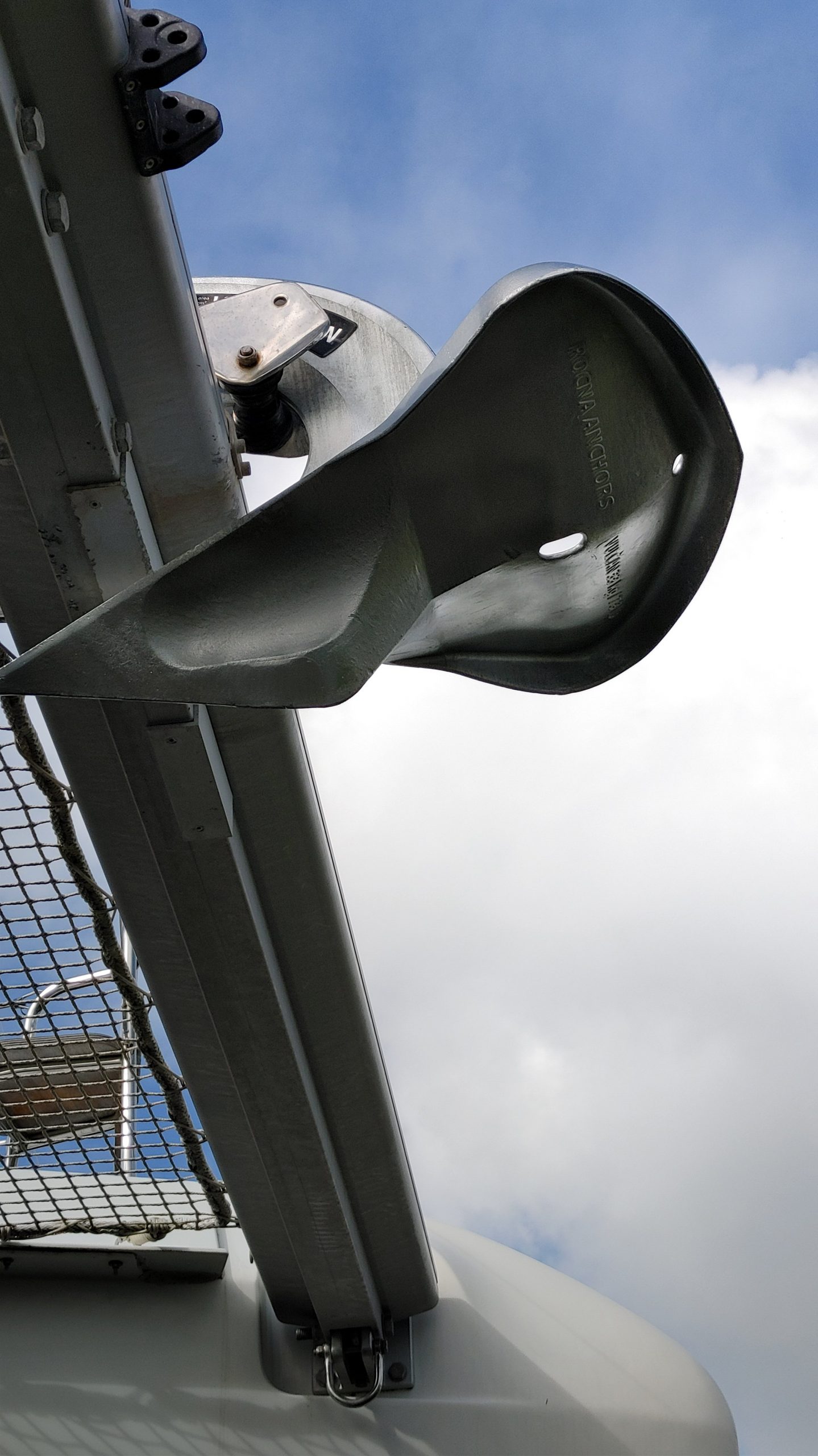
Our New Anchor



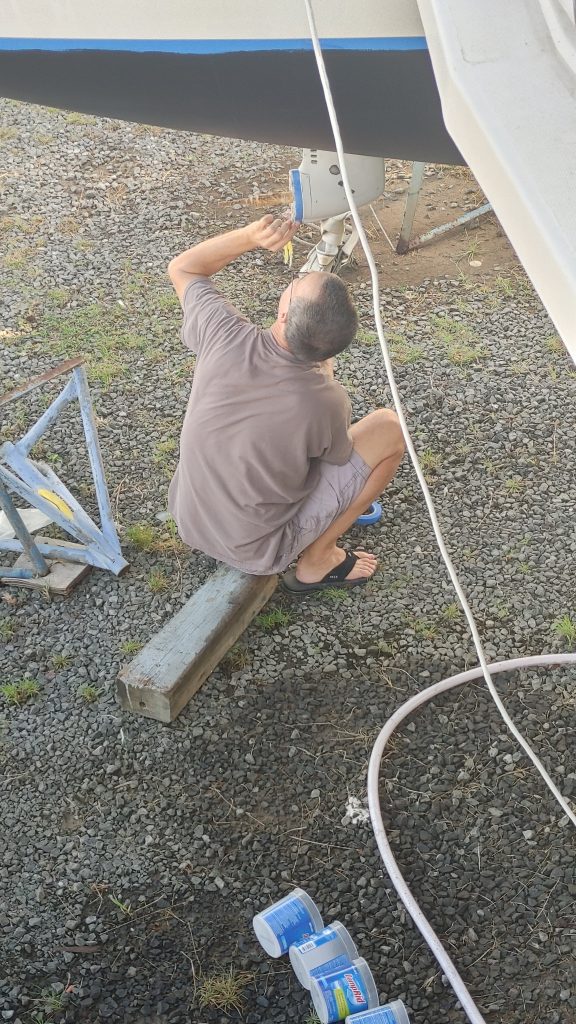
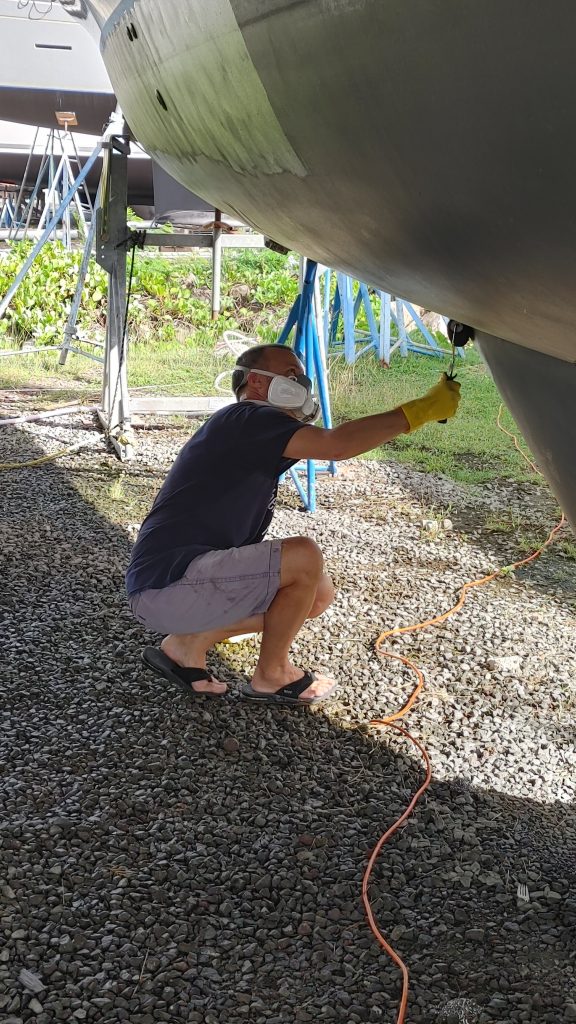

We went back down in June to do some work on the boat for a week. Now the boatyard had filled up and they had an entire second row behind our boat. On the bow side of our boat we’re up against a little drainage ditch, and on the stern side we now have additional boats, so we’re stuck back there. We’re behind the two boats that are on the sides of the shot, with the ladder.

On our trip back down in June, the boatyard was much more crowded. That’s our boat with the ladder.
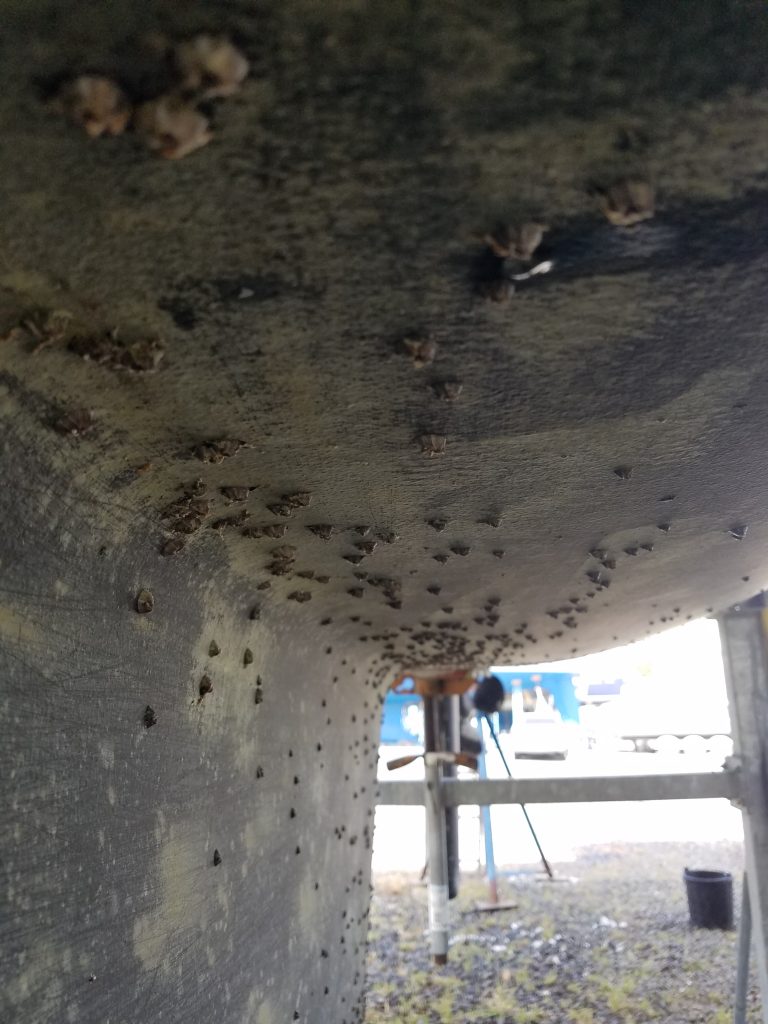
When we pulled the boat out, there were barnacles on the hull which had to be scrapped off. What you see here is not that bad compared to many other boats. The barnacles comes off quickly with a scraper, it is the “glue” that they use to attach to the hull that requires a little more work.

Here is where they finally put us. We told them we weren’t putting the boat back in the water until December, so they put us up against a drainage ditch and I’m sure they’ll pack a bunch of boats behind us, completely blocking us in.
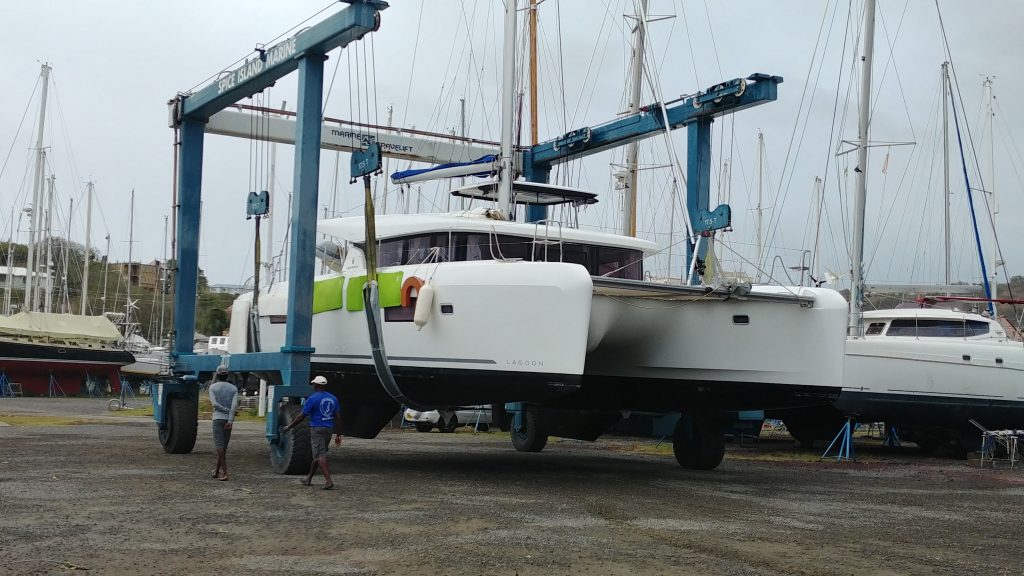
At Spice Island Marina. They pick the boat up and move it with the travel-lift. I can’t remember how much weight this travel-lift is rated for, but our boat weighs about 15 tons.
Since we were squeezing the boat into a very tight slip, we lined the sides of the boat with foam pads. The green pads are actually yoga mats we bought at the local hardware store (they were going fast because I think other people were thinking the same thing), while if you look more towards the stern (back of the boat), there is a white pad (half covering the rear window). The white pads are pads taken out of our outside cushions for the seating area.
It looks very stupid, but it worked very well.
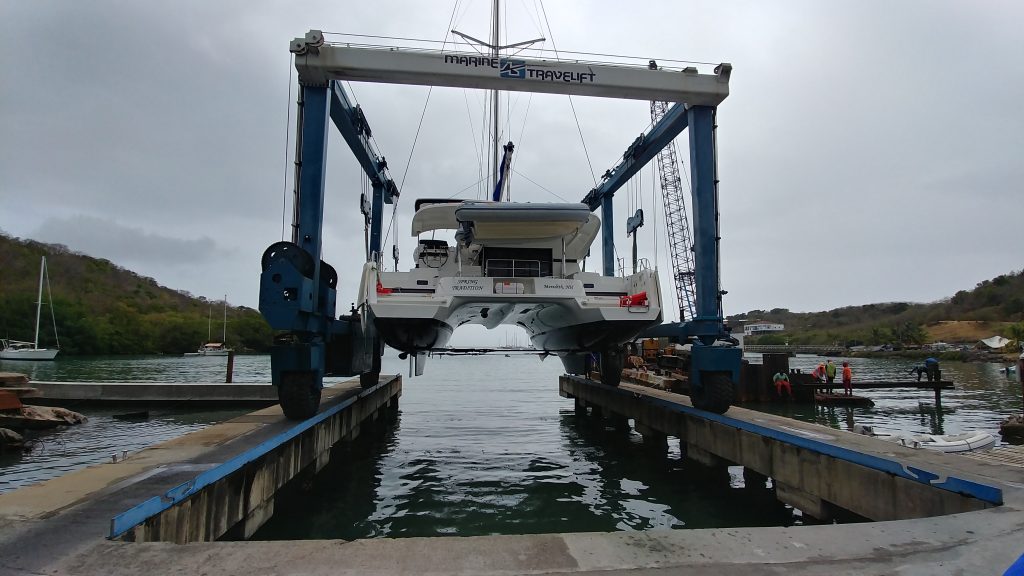
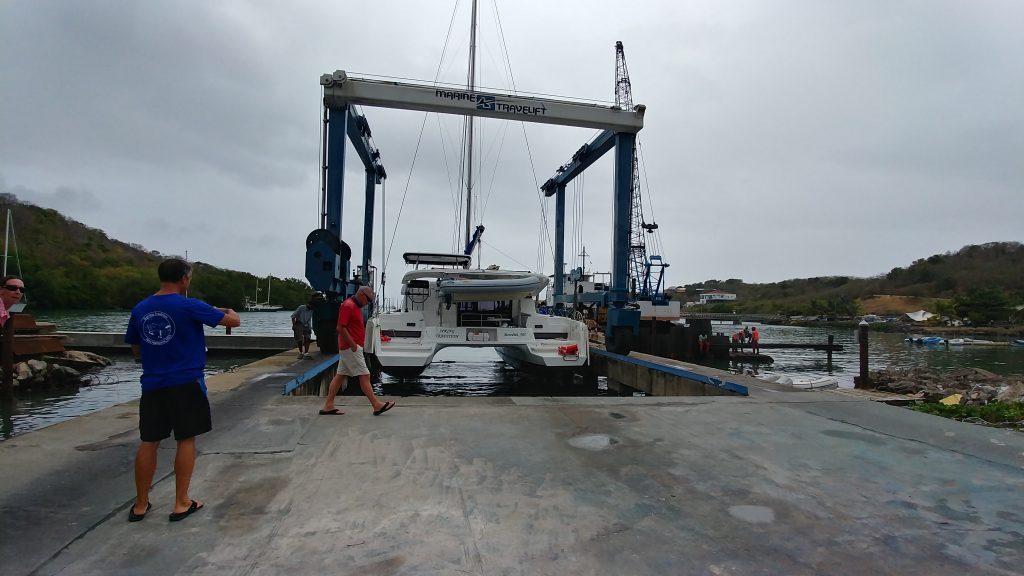
Spring Tradition is hoisted out of the water and up in the lift to be put away for summer.
That’s me in the blue shirt and our friend Chris in the red shirt.
I had to back the boat in because if I brought it in forward, the fore-stay (the line that holds the mast up from the front) would have hit the travel-lift cross beam. Needless to say, backing is much more challenging than going in forwards. The steering mechanism is all in the stern (rear) of the boat, so if you get half-way into the slip and a cross-wind develops, the bow (front) of the boat is going to get blown to the side and there will be nothing you can do about it.